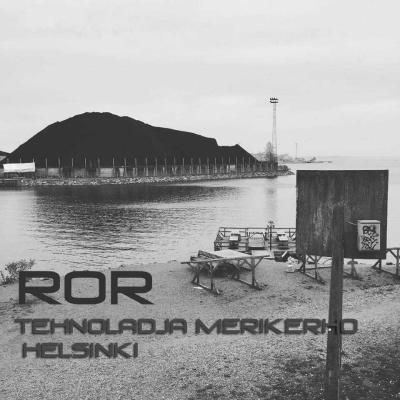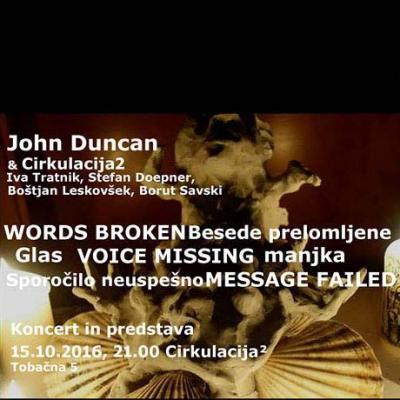Francisco Tomsich – Borut Savski = Poletne pesmi | Summer Songs
Published on March 15th, 2023SUMMER SONGS
The Silent Movies (Francisco Tomsich – Borut Savski)
video-sound generative narrative installation
Dedicated to Simon and Boštjan
Cirkulacija 2
Podhod Ajdovščina, Ljubljana
22. march – 6. april 2023 | open all days except saturday and sunday: 12.00 do 18.00
1. Opening :: Wednesday 22. march 2023, 20:00 ::: Performance: The Benshi Project: Summer Songs
2. Wednesday, 29. march 2023 at 20.00: Concert: Borut Savski :: Sound biotope
Anti-antropocentric approoach in sound artificial environment (-> “we the algorithms are also living creatures!”). Sound Biotope was the first sound instalation by Borut Savski (1999, Galerija Kapelica), which already used the heuristic generative approach to the live creation of sound material. As then the result is extremely coherent sound dynamics that manages to propose the idea of a natural environment. The author will enter the sound biotope live with his two turbo-flutes.
3. Wednesday, 5. april 2023 at 19.00:Yugojapanese stories :: A sound score for silent movies
Summer Songs, the second project of The Silent Movies duo, is an artistic environment comprising a series of sources of visual, sound and verbal information mutually dependent on each other. It functions as an never-ending concert, in which a video installation composed by a series of recent silent films made by Francisco Tomsich provide rough material, red threads and digital data to a sound ecosystem developed through an original software and materialized using specifically-made sound sources (-> vibration loudspeakers) by Borut Savski. It seems that the first project from 2020 entitled Elegy was inspirational enough to lead th participating authors to Summer Songs.

Francisco Tomsich:
The series of silent, short, often meditative, mostly monochrome, round-shaped films Silent Works (2016-) are composed upon my video diaries. They have a strong documentary character. They privilege or search for the apparition, that is to say, the satori or revelation which arises from contemplation and sometimes boredom and rewards a certain impulse to filming. Their main topic is time. The aesthetic device shaping their narrative is the allegory. They are thought in verse, but not in one language only. I want them to be fragments of present that point out to contested images of the past and divisive concepts of future.
The footage manipulated in the series of Silent Works to be exhibited in the framework of the Summer Songs project was produced over various years in different locations of Slovenia, Croatia and North Macedonia. Together, they tell, literally or allegorically, a story of broken summers. They are traversed, not without joy or irony, by different models of catastrophe. From a formal point of view, they are composed applying musical analogies to video editing in order to achieve the features of different song structures. They are also fed by my last two years of intense studies of Japanese film, a field of references that also gave ground to another approach to the silent character of these pieces: The Benshi Project, which deals with linguistic and narrative aspects and is articulated in performative terms. Benshi, narrators of silent films, were a specific feature of Japanese film history.
The pieces included in this exhibition are:
A Reader’s Digest on Popular Histories of Yugoslavia (25’25, 2023)
Croatian Summer Song (16’30, 2020-2023)
Osa (2’41, 2023)
Defense (19’26, 2023)
Skopje Tryptich (21’43, 2019-2023)
The Futures (6’53, 2016)
Borut Savski – Distributed body:
The video-audio system is built in the manner of an anthropomorphic body, which means that it has limbs, a basic body and a neuro-cerebral central part, which also includes the visual perception of video sources. The body with all these organs enters the space in the manner of a machine, which means that the peripheral nervous system is made of the wiring.
The visual part of the program drives three main video sources, from where it continuously senses the visual changes in the image. Sensing is performed by the OpenCV (computer vision) programming library in the Python programming environment. The size and position of any significant change in each frame image is converted into a symbolic circle with the coordinates of its position and sent to the audio part of the program that is built in the Puredata environment. This also allows operation within a local wireless network, so that additional video sources can be added to affect the overall sound.
The basis of the cerebral function takes place at the level of sound: all the decisions that can be musically called interpretation take place here. All approachings and deviations from musical aesthetics occur as a result of built-in decisions. To a large extent, decisions are arbitrary – stochastic. They take place according to the principle of three sound density groups: diluted/ calm, medium and condensed/ intense, which mainly concerns the components of timing. In this way different sound atmospheres are produced – with the order and density unpredictable. The further design of this sound algorithm will take place during all days of the layout/ installation.
The sound sources are sound pieces/ samples that more or less refer to individual images from which they are fed with data. The four output audio channels can work separately, or they can flow from one to another – across the space.
An interesting idea is to use a relatively new type of loudspeaker as a sound source – a vibration speaker. Here, the sound is created by transmitting vibrations to any material of much larger dimensions than the vibration lever of the speaker. Our decision was to bend a particularly light wooden panel into the cylinder sleeve and thus achieve uniform sound radiation on all sides of the vertical axis of the cylinder. This is called an omnidirectional speaker. The wooden sleeve has been closed at the bottom and top to create an additional resonant space that amplifies the lower mid frequencies. The sound check results so far are specific, and sometimes even brilliant.
Some more information: http://www.ljudmila.org/~savskib/?p=1400&sb=1
Distributed body is the title of the installation/ sound event that Borut Savski performed in December 2005 in the Mali galerija (Moderna galerija) in Ljubljana. in which he first clearly described the anthropomorphic structure of the interactive-generative sound-producing body. His first sound installation project Sound Biotope (1999; Kapelica gallery Ljubljana) – also had this approach.
Metaphysical addendum: Metaphor of the cerebral
Let’s get down to articulating the principles of assembling the coexisting diversities into a whole. It is immediately clear that it is about a classic dichotomy of the visual/ observed (and by it’s nature necessarily focused – therefore partial) and the sound / aural (the nature of human sound perception is much less focused). To these two we add the verbal narration which seems to encompass the previous two – but in a special way.
The gaze has the nature of focusing – dismissing surrounding insignificance at the expense of focusing on detail. The peripheral field of vision is informationally very limited – it serves only as an additional security mechanism. There is no simultaneous view of the visual details scattered around the observer. A comprehensive view is possible only by memorizing the observed details separately and interpreting the whole on the level of cognition – on the basis of an overall sensation. Each of the individual video stories are coherent in its own right – telling in the terms of visual context and images. A kind of information micro clusters – miniatures. Memories are often short visual sequences that, through more or less stable synaptic connections, carry some m eaning – information. Are the sets of words (meaningful sentences) also a kind of memorized images? In a more free associative process (e.g. in sleep), images, sentences and emotional clusters (-> information) can be fused into longer sequential chains. Despite the sense of coherence, we can quickly see that this is a patchwork of individual fragments. Only intensive reflection in the cerebral cortex can create a sense of parallelism/ coexistence of all the partial observations.
eaning – information. Are the sets of words (meaningful sentences) also a kind of memorized images? In a more free associative process (e.g. in sleep), images, sentences and emotional clusters (-> information) can be fused into longer sequential chains. Despite the sense of coherence, we can quickly see that this is a patchwork of individual fragments. Only intensive reflection in the cerebral cortex can create a sense of parallelism/ coexistence of all the partial observations.
In the case of the Summer Songs project, we have another information channel, which is closely related to the simultaneously elusive narrative of a number of scattered visuals all around the observer. The sound. It is created directly from the changes in the video image, so we can claim that it follows the narration of each individual visual fragment to the greatest extent. Correspondence is therefore evident. The sound is not very meaningful – it is abstract. It acts emotionally as a companion to the other types of narratives. In order to avoid literalness and approach musicality, we use data interpretation – which means some data reduction and some emphasis on musical interpretation – the added arpeggios, rhythmics and the like. We have the desire to melodically and rhythmically bring together the asynchronously coexisting narratives, which means that at some point we want to confront the data streams before they become sound. This means establishing a “supervisor” (in a cortical manner) in the space and at any moment – which points to the beginnings of “awareness of the whole”. But this can only happen in a decent way in the visitor’s cerebrum. In a film-like manner, we want to stylistically (emotionally) support the fragmented (but individually coherent) visual actions.
As a third complementary part – an additional narrative moment: a narrator / the spoken word – can be added. In the manner of the Japanese benshi (*) storytellers, a spoken narrative can be a verbal interpretation of a visually fragmented surrounding. Words direct the attention of observers from one fragment to another. In this way, the words create a meaningful sequence of images. Of course, similar to free association, the order in the sequence can be different every time – and meaningfully variable. Or even misleading. It seems that this kind of narrative enters the cortex in much like visual cognition, even though the perception is auditory. Understanding again requires focusing – but not the gaze.
* Benshi were Japanese performers who provided live narration for silent films (both Japanese and Western films).
Francisco Tomsich https://anticlimacus.wordpress.com/
Borut Savski http://www.ljudmila.org/~savskib/
Produkcija: Cirkulacija 2 + Boja
Sofinanciranje: Mestna občina Ljubljana

Photo: Borut Savski
Photo: Veronika Markuš



























































